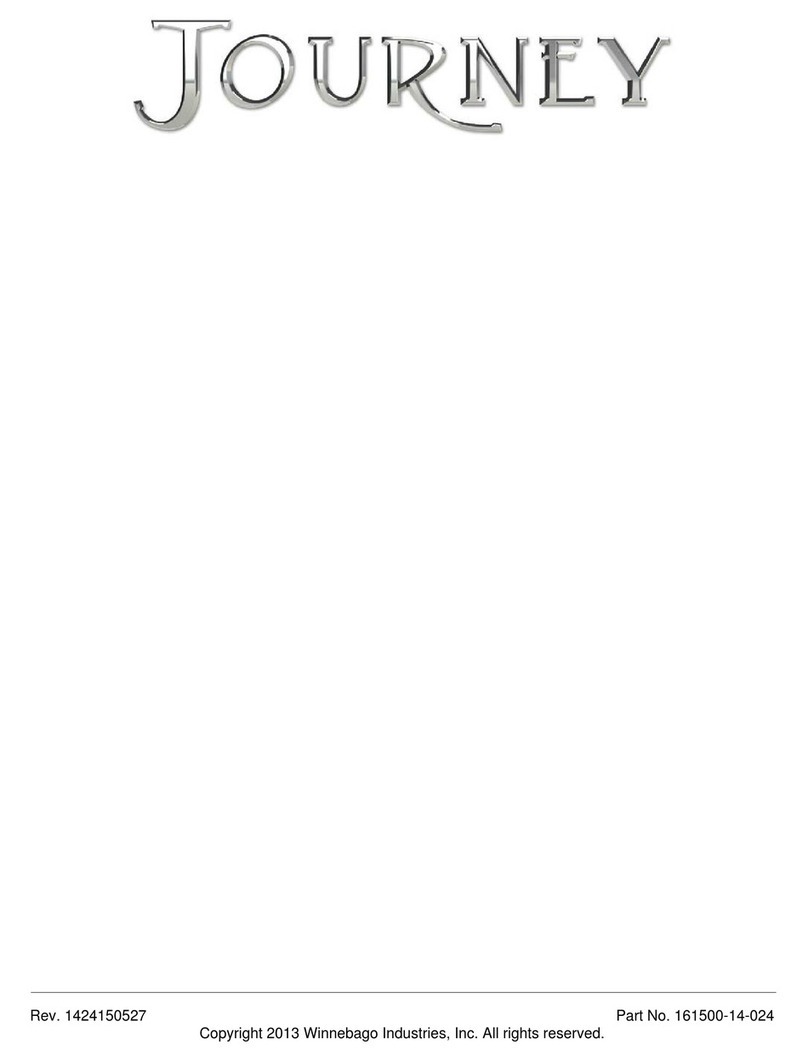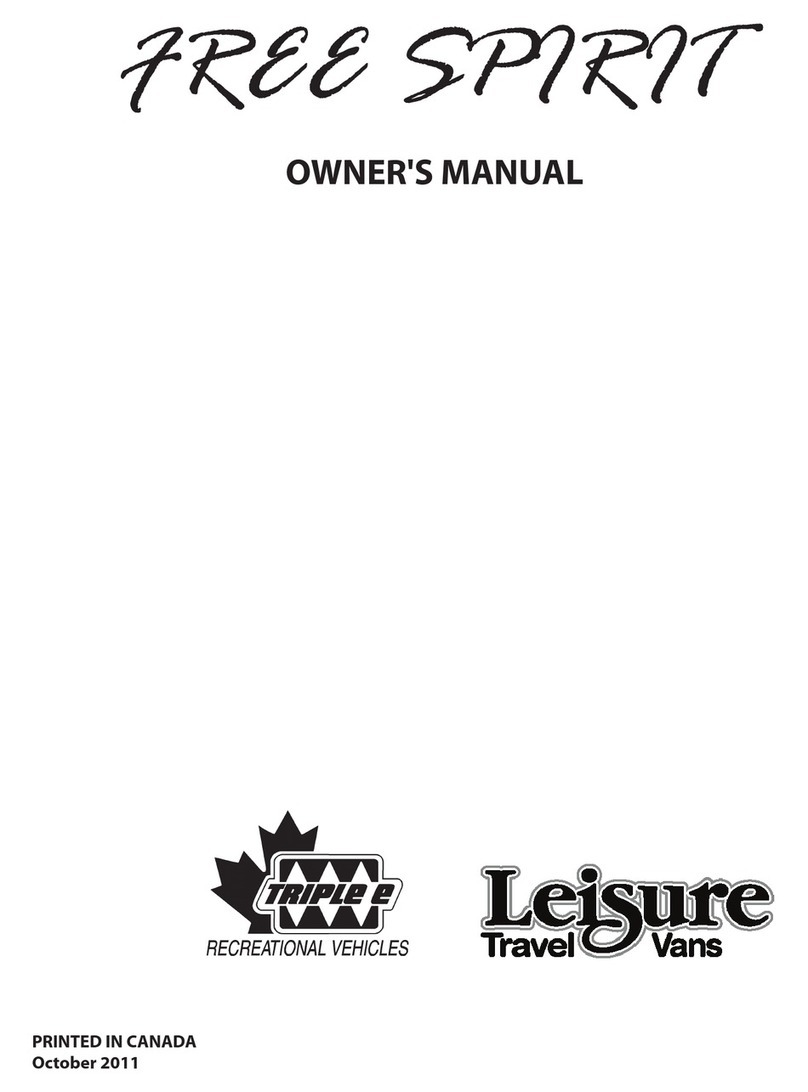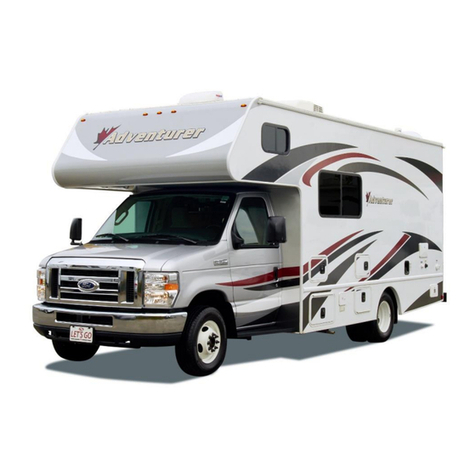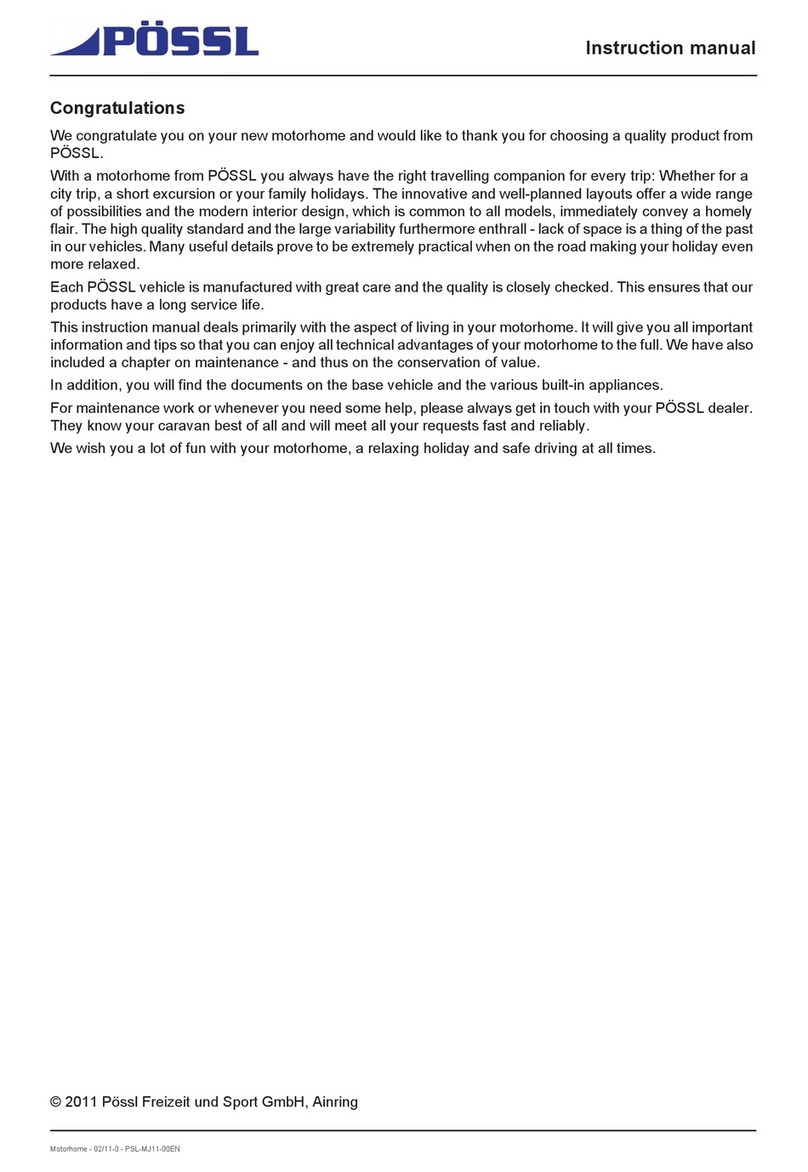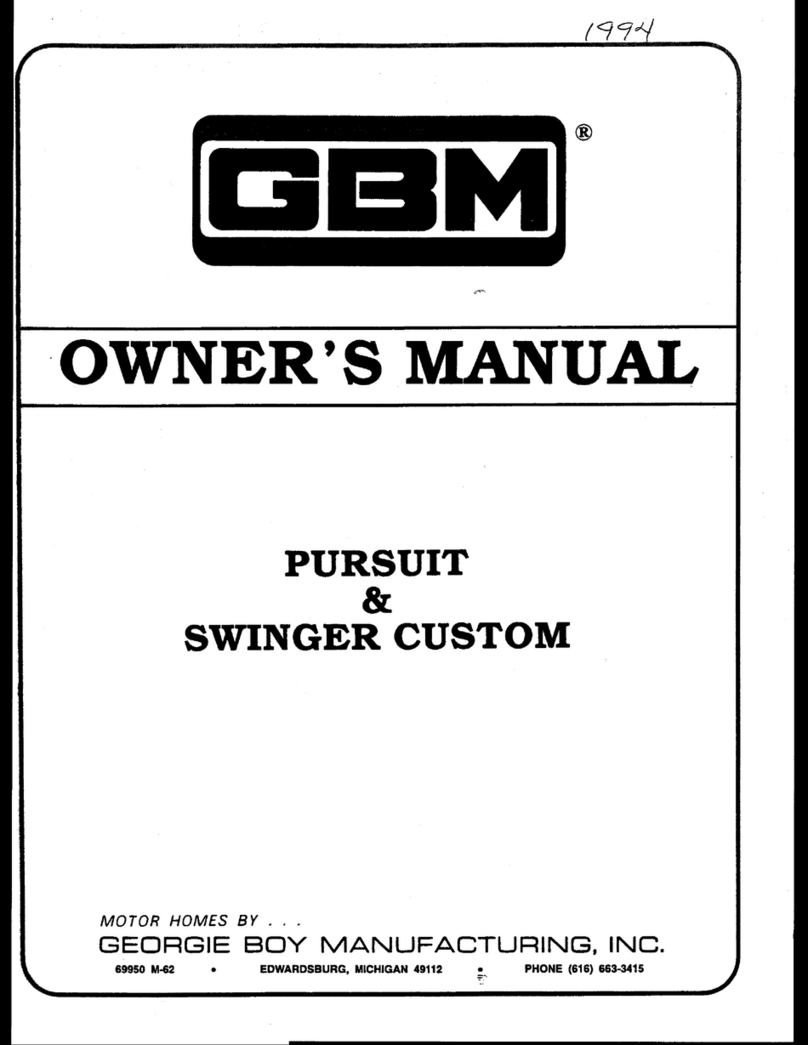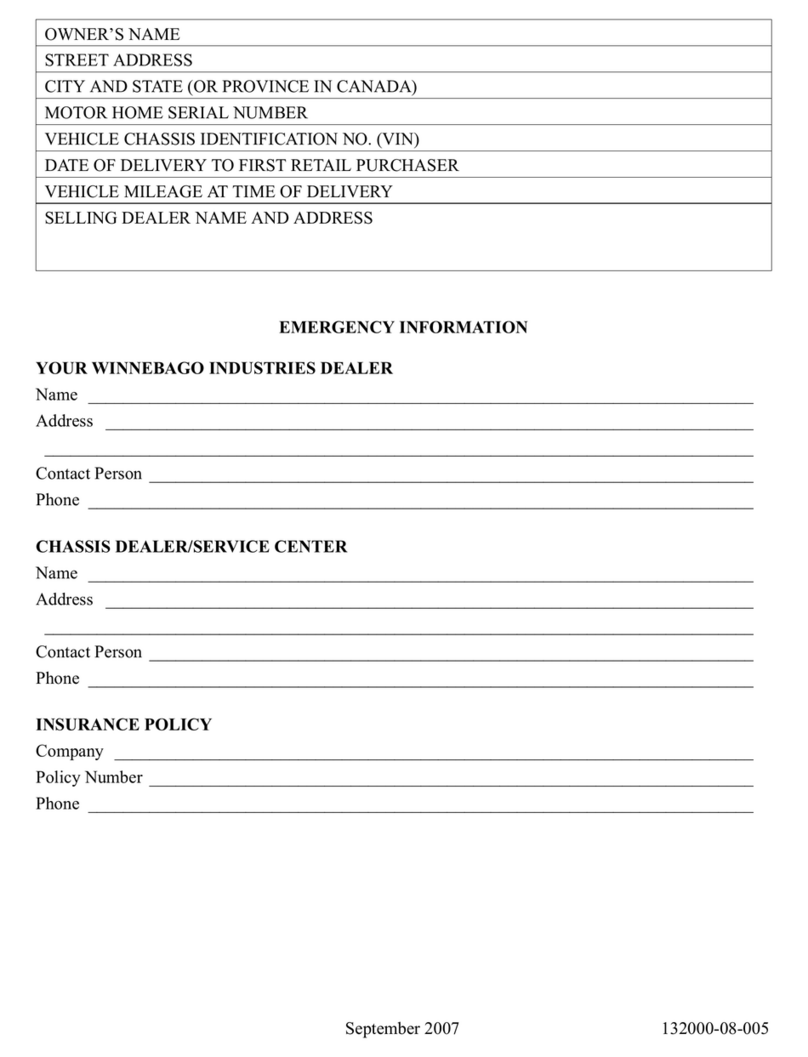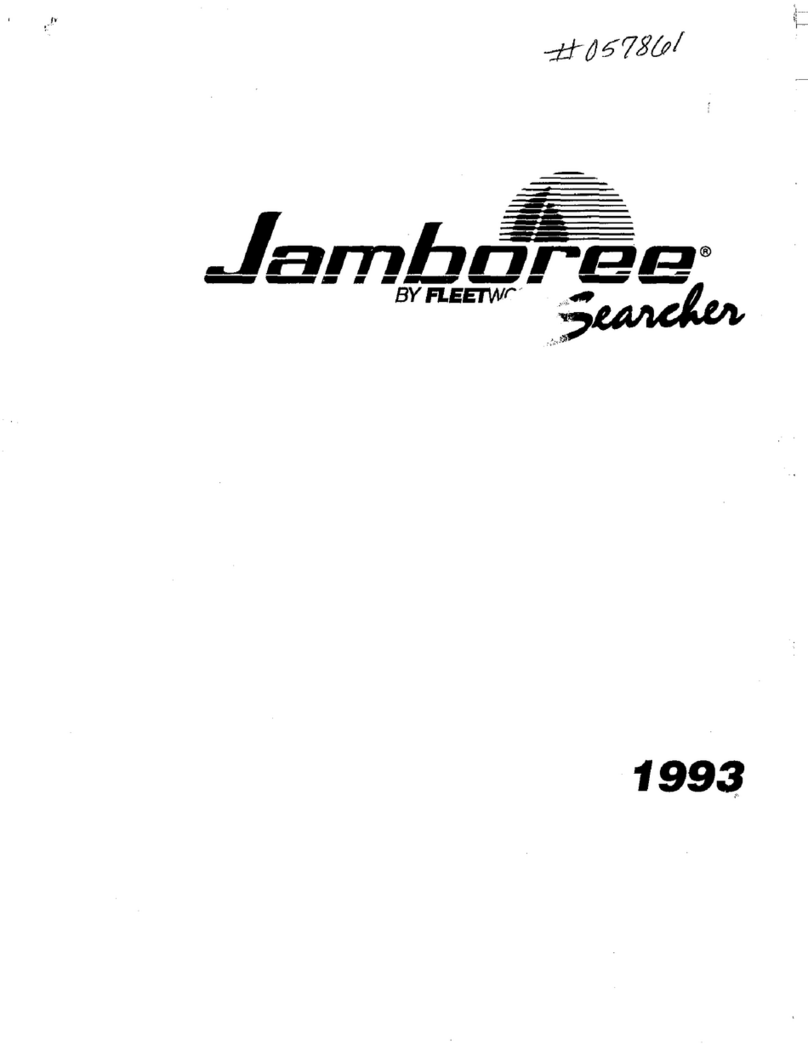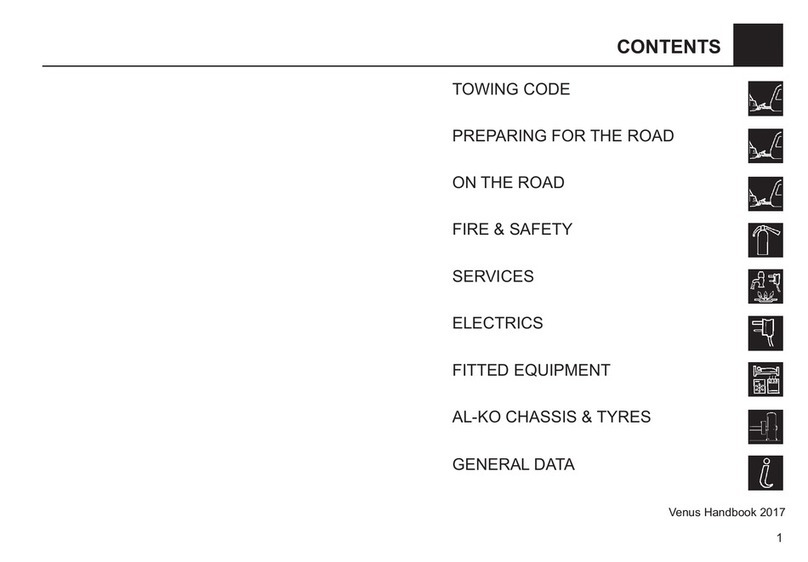
54
5.4 Draining .................................................................... 39
5.4.1 Wastewater.......................................................... 39
5.4.2 WC......................................................................... 39
5.5 Insulation.................................................................. 39
5.6 Locking ..................................................................... 39
6 - Using the equipment ......................................40
6.1 Opening lights 40............................................................
6.1.1 Windows...............................................................40
6.1.2 Rooflight .............................................................. 43
6.1.3 Doors.................................................................... 44
6.2 Kitchen...................................................................... 45
6.2.1 Sink........................................................................ 45
6.2.2 Turbovent............................................................ 45
6.2.3 Gas-powered appliances ................................ 45
6.3 Table..........................................................................49
6.3.1 Folding table ....................................................... 49
6.3.2 Bar leg (optional)............................................... 49
6.3.3 Telescopic leg (optional) ................................. 49
6.4 Television (optional) ............................................... 50
6.5 Car radio DVD player and GPS (optional) .......... 50
6.6 Double reversing camera...................................... 50
6.7 Bathroom ..................................................................51
6.7.1 Shower and washbasin......................................51
6.7.2 WC..........................................................................51
6.8 Sleeping area........................................................... 52
6.8.1 Island bed ............................................................ 52
6.8.2 Twin beds............................................................ 52
6.8.3 Pull-down beds.................................................. 52
6.8.4 Fitted bench seat (optional)............................ 54
6.9 Cab blinds ................................................................ 55
6.9.1 Manual privacy screen...................................... 55
6.9.2 Electrical privacy screen (optional)............... 55
6.9.3 Electrical screen (optional) ............................. 55
7 - Maintenance and winterisation .................... 56
7.1 Gas installation ........................................................ 56
7.2 Maintenance of the interior .................................. 56
7.2.1 Cab......................................................................... 56
7.2.2 Furniture............................................................... 56
7.2.3 Cushions, mattresses, curtains....................... 56
7.2.4 Maintenance of the windows..........................57
7.2.5 Bathroom fixtures...............................................57
7.2.6 Cooking appliances ...........................................57
7.2.7 Refrigerator...........................................................57
7.2.8 Water heater ........................................................57
7.2.9 Control panel.......................................................57
7.3 Cleaning the exterior.............................................. 58
7.3.1 Washing the bodywork..................................... 58
7.3.2 Tar .......................................................................... 58
7.3.3 Small scratches .................................................. 58
7.4 Winterisation or long stops ................................... 58
7.4.1 Batteries ................................................................ 58
7.4.2 Water system........................................................61
7.4.3 Turning o the refrigerator.............................. 62
7.4.4 Cushions, mattresses, curtains....................... 62
7.4.5 Repairs .................................................................. 62
8 Maintenance book .............................................. 63
9 List of dealers ......................................................64
1 - Welcome
1.1 Welcome aboard
Dear Sir or Madam,
Thank you for choosing Le Voyageur.
It is very important to read this user manual carefully as well as the instructions provided with all the fittings: refrigerator,
heating system, oven, central control unit, etc.
To ensure greater comfort and to prevent excessive depreciation of your motorhome, use it properly.
The Le Voyageur network and the Motorhome Service Centre (MSC) are always at your disposal (see contact details in
chapter 7).
Any infringement, translation or copying of all or part of this document is strictly forbidden.
Any full or partial copying requires our prior written permission.
Enjoy your trip with your Le Voyageur motorhome.
1.2 How to use this manual
Always keep the user manual to hand in the motorhome and inform the other users of the safety instructions. This document
contains some important remarks concerning personal safety. You should read them carefully. You will find below the
meaning of the various pictograms associated with these remarks:
